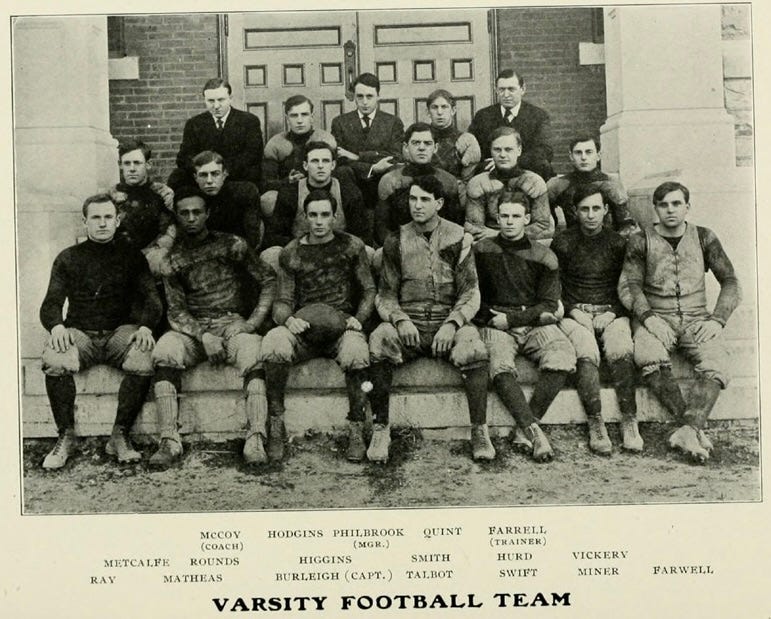The First Forward Pass Revisited
Like many others, I have told the story many times that St. Louis University (SLU) threw the first legal forward pass against Carroll College (now University) on Wednesday, September 25, 1906, sometimes incorrectly reported as happening on September 5, 1906. That game has long received credit because SLU used the forward pass more effectively and, perhaps, more often than anyone else that season. Also, they played the game on the Wednesday before what most considered the 1906 season's opening weekend.
Part of the attraction of crediting SLU with throwing the first forward pass was that SLU did not initially receive that credit since they were out there in the boonies and did not compete with the Eastern elites. However, once there was documentation showing SLU had thrown multiple passes against Carroll, the powers that be accepted SLU as the forward-passing pioneer. Unfortunately, times change, and so does history.
Those of us who research football history today have the advantage of using online search tools that make the process far more efficient, so we can search for instances of "forward pass" appearing in U.S. newspapers during the second half of September 1906 to find examples of that term appearing in newspapers large and small.
So, in researching the early days of the forward pass recently, I came across news stories of college games played on Saturday, September 22, a week before opening weekend and four days before SLU played Carroll. Most of those games involved "minor" teams, so they received little media attention at the time or from football historians since then.
Additional effort is needed to comb the records for all games played on September 22, but the following were among those played that day in the Eastern Time Zone:
Pitt @ Butler (PA) Athletic Club
Lebanon Valley @ Penn State
Niagara @ Rochester
Bates v US Artillery of Portland
New Hampshire @ Maine
At least one detailed newspaper article exists for four of the five games, the Bates game being the exception, and three do not mention the forward pass occurring in the game. Since fans were interested in seeing how the new forward pass would affect football, you would expect reporters to mention any forward passes that occurred. One or two articles confirm the teams stuck to straight football, meaning they kept the ball on the ground, mainly between the ends.
However, the New Hampshire at Maine game is different in that a newspaper article states that New Hampshire threw one incomplete forward pass during the game, which resulted in a turnover based on the 1906 rules. The article does not tell us who threw the pass or to whom they threw it, only that it missed.

A few weeks later, the University of New Hampshire published the October edition of The New Hampshire College Monthly, and it repeated the story that both teams played straight football other than New Hampshire attempting one forward pass and losing possession due to the turnover.

(A news report shows that Phillips Exeter attempted but did not complete a forward pass the same day in a loss to Chelsea AA, but I'm confining my active research to college games.)
So, while additional research is needed to determine whether other college teams threw forward passes that day or earlier, the period documentation shows that the University of New Hampshire threw a forward pass four days earlier than St. Louis University. That means the team, widely touted as the first to toss the pea downfield legally, was not the first after all. A potential saving grace for SLU is that they completed their second forward pass attempt for a touchdown, so they still may have the first forward pass completion and thrown the first touchdown pass.

I'll report back as I find other information and welcome any input others may have.
Football Archaeology is reader-supported. Click here to buy one of my books or otherwise support the site.




Excellent job of finding this historic nugget confirmed by multiple sources!